TOM FRANCIS
REGRETS THIS ALREADY
Hello! I'm Tom. I'm a game designer, writer, and programmer on Gunpoint, Heat Signature, and Tactical Breach Wizards. Here's some more info on all the games I've worked on, here are the videos I make on YouTube, and here are two short stories I wrote for the Machine of Death collections.
Theme
By me. Uses Adaptive Images by Matt Wilcox.
Search
Valve Steal Third And Fourth James Weapon Ideas
Not really, of course: the newly announced Wrangler is a more intricate beast than my Laser Pointer or Shield Spanner suggestions. It sounds ridiculous: not only do you get to direct your Sentry’s fire, but it’s also nigh-impervious to harm and twice as powerful. But of course, if you’re using the Wrangler, you’re not using your Wrench. So your Sentry isn’t getting healed, and it has to shut down for three seconds if you whip out your spanner.
I won’t pretend to know how this will play out, but I actually think this is how Sentries should always have been. There should be no auto mode. Having the AI spot and shoot human players robs the Engy of the satisfaction of doing it himself, and the victim the knowledge that they were caught out by a real opponent. Instead, a computer has all the fun, and the players it kills don’t learn much: the computer simply out-damaged them. Most of the time I die to a Sentry, my only other option was to hang back and do nothing.
So I’m glad the Wrangler sounds crazy powerful, because I’d like everyone to use it, all the time. I’d rather have a tougher but fallible opponent, and one that doesn’t rapidly self-heal, than the alternative.
I’m taking some time off at the moment (which will hopefully translate to some progress with Private Dick), but Jaz and the guys have been running an amazingly good days-long liveblog of every snippet of information that’s come out about the Engineer update.
PC Gamer Has Been Allowed Onto The Internet
We tried an experiment a while back, where we suddenly started putting our hearts and souls into our little corner of computerandvideogames.com to see if a) we could do it, b) people would like it, and c) people would like something more. We could and they did and they would.
This information was then fed into a much larger and darker decision-making process that I had really nothing to do with, the first stage of which acts a little like a paper shredder, but it eventually resulted in us getting a site anyway.
We have wanted this very badly for a very long time and worked very hard to get it. So, thank you to all who responded to my thinly veiled call for you to express deep dissatisfaction with our previous web presence, and welcome to our new one.
Since Tim was away at E3, I was in charge of the site launch, and Graham helmed the magazine. It’s been a frantic… Christ, one week? Feels like a month. It’s been a frantic week in which we’ve put up over a hundred and fifty articles, so I thought I’d highlight some of the stuff I’m most pleased with so far.
- Project Dust
This was the first time I read news I did not know on our own site, and it happened to be the most surprising and interesting reveal of E3. It’s also great to see something exciting like that and not have the “But is it coming to PC?” anxiety. It’s on our site, so yes.
- Gaming’s best cereal-based shooter
Evan’s wonderfully uncynical look at a piece of Americana I’d heard of but really knew nothing about, and the bizarre surrounding culture.
- 20 beautiful new Brink shots
This just makes me happy because it’s just not something we could do effectively before, and it looks superb on the page. It was a personal quest of mine to ensure that whenever we showed off screenshots, you’d just have to click them to get straight to the full, high-res, clean, unwatermarked original file.
- Transformice
Jaz’s post is a great statement of the kind of free game coverage I’ve always wanted. To me, “Here’s a free game that’s mildly entertaining for thirty seconds” is not news – I can see ten of those a day on sites dedicated to that stuff. If we’re talking about one in particular, I want to know why, ideally in the form of a funny story about what happened while playing it.
- Engineering victory in Supreme Commander 2
After helping us out for two crucial weeks, Tom Senior surprised us all by writing his best piece (that I’ve read) on his last day. A great guide to a hilarious tactic with truly magnificent screenshots. I can always tell when someone’s writing about something they know and love, because it’s the only kind of article I can read through without wanting to change anything – the writing just clicks.
- Microsoft’s shameful E3 PC showing
This is why I like having Tim as an editor. At PC Gamer we’re lucky enough to carry some authority without being an official mag beholden to anyone, so when someone screws over our platform, we can say so in no uncertain terms. No-one more so than Tim. I’ve always been proud of PC Gamer’s history of eloquent indignation: I think we do a good job of standing up for gamers without sounding whiny or getting hysterical. Rants are commonplace online, good rhetoric is not.
Controlling the launch madness means most of the really substantial stuff I’ve contributed is what I wrote ahead of time – namely a week of Deus Ex and Deus Ex 3 features. It’s been an interesting prototype of how we can provide really nerdily detailed coverage of a hugely exciting game in both the magazine and the website, without rendering either one redundant.
In both the UK and the US, the mag carries a six-page feature that has all the juicy information and probably the best summary of why Human Revolution is worth getting excited about. It has more screenshots and art than have been released online, and it came out well before anyone was allowed to say word one about the game on the web.
On the site, you get the full interviews it was based on, a blow-by-blow account of exactly what I saw and what I thought of it, some informal chatting about the art, and a reminder or two of what we loved about the original. It’s almost the opposite of conventional wisdom about the web versus print: the web’s supposed to be quick and brief, but I think it can be a place where people get to choose the level of depth they want. Print’s sometimes characterised as long-form and slow, but here it’s faster and punchier at presenting the juicy details.
The blow-by-blow in particular was really fun to write. It’s an attempt to address two of my most common frustrations with previews: “Stop wanking and tell me what you saw,” and “Don’t just tell me what you saw, tell me what you thought of it.” Writing it like a liveblog presented a really convenient format for getting facts and impressions side by side without a lot of structural wrangling to fit it into flowing prose.
Of the interviews, I think the one with art director Jonathan Jacques-Belletete stands up best on its own. Knowing I’d also be talking to the game design and story people separately freed me up to ask some more wide-ranging stuff, and see where the discussion went. And I really liked how honest he was when I asked about the risk of going obviously futuristic when that was so badly received in Invisible War.
Big thanks to Lewis Denby and Jaz for their help getting the interviews into electrowords.
I am now profoundly exhausted, so please be nice. The feedback so far has been amazing, but what remains to be seen is whether people who like these articles will take the time to link them on their weblogs, forumhaunts and Facetwitters. We finally have the chance to live or die by the quality of our stuff, so now we work overtime to make it as good as we can – and see who notices.
The First-Person Observer
I don’t often write a whole post just to link a site – since Twitter, anyway – but Chris Livingston’s new venture deserves special treatment. The First-Person Observer is an online paper covering the issues that matter to today’s gruff, laconic videogame protagonists. It’s:
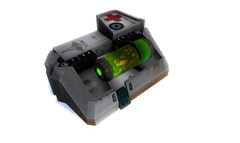 Relevant!
Relevant!Health Pack Reform Divides Nation
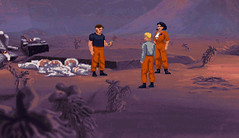 Classic!
Classic!
Desperate, Marooned Astronaut Tries To Use Every Item With Every Other Item
 Scientific!
Scientific!
Report: One in Four Children Born With Ability To Slow Down Time
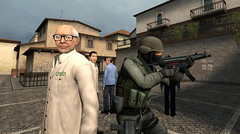 Touching!
Touching!
Hostages Rescued by Courageous Racist
And it’s some of the funniest games writing I’ve read all year. It’s pretty easy to come up with the idea of an Onion for gaming, but it’s harder than you’d think to flesh it out, keep it varied, and avoid driving the joke into the ground. Hardcasual exists, but it’s pretty hit-and-miss and focuses more on gaming news rather than news from within games.
The stories above are just my favourites: impressively there’s masses more to read already. I don’t know how regularly he plans on updating it, but I don’t think it needs to be frequent to work. It just needs to stay this good.
On Screwing Around
Just Cause 2 is now a real thing people are playing. And, more gratifyingly for me, a much yakked-about Big Deal in the way the first never was. This is the sequel to a unique and majestic game that I haven’t stopped playing in the four years since it came out, but one so many people were maddeningly dismissive of. However deliriously excited I got for the sequel, I was never confident it could vault the bizarre wall of apathy some people erect around phenomenal works that come from unrecognised sources.
It’s gone down so well that – and you couldn’t say this of the first game – there may actually be people in the world who like it more than me. Not by a lot. It’s the ultimate screw-around game, and I love screwing around; I spend 80% of my gaming life doing it. I have answered the question “What are you doing?” with “Stabbing this explosive barrel to see if that makes it blow up.”
Just Cause 2 makes me realise that, in a lot of those cases, I wasn’t screwing around in a sandbox. I was blundering drunkenly onto a movie set, punching the love interest and setting off the pyrotechics. Here, though, I’m screwing around with things that were pretty much put there to be screwed with. Avalanche had a feeling I might tie a tank to a passenger jet at take-off, so they made sure I could.
It’s an amazing feeling, and no game has ever really catered to it like this. Played at its best, Just Cause 2 is raw science: curiosity, experiment, volatile result. But it is catered to. These elements were put here for me to mess up, and for that reason none of them are important. I am a destructive child whose attentive parents have given him things they can afford to lose. Toys.
I can tie a tank to a passenger jet, but it’s a tank and a passenger jet. The game has more, and they’ll spawn in seconds. I’m interested in the physical result of my tinkering, but I already know the real result: nothing. Nothing can ever happen. They can’t give me anything significant, because they know I’d tie it to a ski lift until it split in two. Missions can make a helicopter the objective, but that doesn’t make it important – it just bolts on an arbitrary failure state. Missions provide a sort of ‘serving suggestion’ for the mayhem, but they don’t spice it up.
So I’m in the playpen. On the up side: woo! Playing! On the down: I kinda want to fuck with the grown up stuff after a while. Because I’m not just a child, a scientist, and a brat. I’m a tempest of genuine malice, a power-thirsty psychopath with a crowbar of dysfunction. I want to tinker, but not just with the Mechano set. I want to break the car.
I’m not saying I need more power in Just Cause 2: I’m already a demon, and the mods make me a God. I want things to have power over. The Colonels are a start: named, unique, significant, killable. But I don’t want to “lower military morale”. Some of the stuff I’ve done in this game would scare nations. I want that popup text to read “Holy fuck. What have you done. Everything is dead.” I want to conquer whole regions when this stuff happens: not easily, not through superpowers, and not right away. But I want whatever ridiculous stuff I screw around with to have an effect I can point to.
These aren’t reasons I don’t like the game. I’ve played it seventy hours, it surpasses one of my all-time favourites in nearly every way, and it’s the most astonishing piece of technology my machine has ever crunched. This is just to paint a picture of where I’d like to see stuff like this go next. Avalanche have conquered the screw-around game to an extent it would have taken backward cinephiles like Rockstar a decade to catch up with. Now I’m interested in the fuck-it-up game: something where I’m allowed to break what they can’t easily replace, and throw a spanner in a machine so large it does something more violent and terrible than explode and respawn.
Making Nuclear War More Interesting In SupCom 2
The notable thing about Supreme Commander was that it let you march a thousand robots around a 640,000 sq km battlefield – more like a county, actually. Supreme Commander 2 doesn’t let you do that, so the initial reaction is ‘Oh.’ But it’s still leagues ahead of every comparable strategy game in scale, control, and stompiness of robots.
The upside of all the scalebacks is primarily speed. It doesn’t really matter whether you pay for the stuff you build gradually (SupCom) or upfront (SupCom2). SupCom2 cuts out the interminable upgrading process to spectacularly accelerate how quickly you can build something vast, gleaming and capable of a war crime. It’s a less remarkable game, but a much more playable one. And even though its matches unfold eight times faster, I’ve already sunk more hours into it than the first.
A few things stop it from completely replacing the first game, most prominently the scale. A few things stop it from being the perfect evolution of the real-time strategy; a few signs of timidity in the Research options. And a few things stop me from really wanting to play it online with strangers – it appeals more than any other RTS in that way, but I still have to customise it a little to be happy with the playing field. So I wrote a few posts about how to fix all these things.
Some of the basic stuff probably isn’t controversial: it needs more eight player maps, two or three ten player ones, more sea maps, and more sea in the sea maps. AI that doesn’t build more transports than it can fill, and a ‘Very Hard’ AI that builds Experimentals with near-perfect efficiency. And a visible build queue, so that things don’t have to be paid for until they start construction, you can see what’s going to drain your resources, tasks can be reordered, and repeat-building factories can start churning out units again when nothing else is sapping your resources.
The Research tree of upgrades you can unlock is a wonderful improvement over the usual nonsense, but they’ve needlessly lost that concept of truly elite units. Experimentals are a different kind of “Fuck you” to the classic “Fuck you, one of my tanks can kill ten of yours.”
Upgrades should be more specific, more significant and more visible. The five incremental ‘Training’ upgrades should be cut to two very expensive ones that each double the units’ effectiveness, and make them physically bigger. It has to be immediately obvious “Shit, that’s an upgraded tank” or “Holy shit, that’s a maxed-out tank”. It should also be different for each race: UEF’s should upgrade health more than damage, Cybran damage more than health, Illuminate damage, health and range.
And scrap all generic ‘damage’, ‘health’ or ‘rate of fire’ upgrades – that’s what Training’s for. They should be replaced by unit-specific upgrades that change their form, size and function more dramatically. So instead of “+30% damage to all turrets” you’d have “Anti-air turrets upgraded to surface-to-air missile launchers, increasing their range and damage and letting them lock on to fast aircraft.”
Every upgrade needs to make a visual difference that’s obvious from any zoom level where you can see the model. Training increases size, a new weapon type changes the shape of the unit and adds an effect, regen causes them to spark colourfully when healing, etc.
This has been a huge problem for me in both games. Because it’s nuclear war, but it’s boring. Either side can build a nuclear missile, but either side can also build an anti-nuclear missile for half the price. The only reason not to is that half the price of a nuke is still significant. So an actual nuclear war is just a contest of who can be bothered to click their button the most, and since the defender has an economic advantage, it’s almost always him. The only time nukes actually get used is when your opponent is too new, stupid or artificial to know to build anti-nukes. Top marks for matching reality, zero marks for fun.
The only good moments we’ve had with them have been when, in co-op, a stupid AI has built their only nuke defense on the fringe of their base. One player readies a nuke, the others send in a combined strike team to take out the defense silo, and the moment they’re successful, you launch. Awesome. But in normal play, a strike force capable of taking down a massively tough nuke defense silo in the middle of the enemy base is also a strike force capable of taking down the base itself. Here’s my proposal:
All factions should be able to build a basic Nuke Defense silo without having to research or unlock it. It has unlimited anti-nukes, but it can only fire one at a time, and they don’t neutralise the nuke: they detonate it. So to avoid just blowing yourself up in a slightly different way, you have to build it well outside your base, and defend it with stuff you can afford to lose or move. The silo itself is nuke-proof – it’s basically a bunker – so you don’t have to rebuild it each time.
The idea is to turn nuclear war into a fight, rather than who can be bothered to click more times. It’s easy to defend against nukes, but only if you can defend a forward position in regular combat. Accordingly, it’s harder to nuke someone if all you do is sit back and nuke, but it’s easier to take out nuke defense if you build a good strike force and use it well.
It also gets you thinking about which directions nukes can come from, and which directions you could launch yours from.
Not strictly necessary, but it’d also be nice if each race had a unique second way of delivering a nuke. Each would bypass nuke defense, but be counterable by conventional units: again, more of a fight than a discrete “I clicked more times” system.
UEF build a Nuclear Bomber that must get close to its target intact to drop its payload. Anti-air can take it out quickly, and the nuke won’t detonate, so advance forces need to take out most AA defenses.
Cybran have a Walking Nuke experimental: a huge, tough block on legs with no weaponry, but which explodes with nuclear force on death. You’ll want to escort it in to give it enough protection to survive, then abandon it so your own units aren’t caught in the blast.
The Illuminate can unlock an upgrade for the Space Temple that lets them fire a nuke into it to hit the teleport destination. But the marker has to be in place for thirty seconds, and the enemy can destroy it in that time if they have the firepower. It’s a test of their base’s defenses, so if you strike while their army’s on their way to you, you’ve got a better chance of delivery.
This has always been a personal crusade of mine – I hate fog of war. It doesn’t meaningfully represent any real element of war, since regular line of sight would cover the whole battlefield on almost any map, and in any game set in modern times or later, dozens of other intel methods would give a clear picture of the scenario. But more importantly, it hurts the game in so many ways. Its crimes:
- Making the whole game look dingy and claustrophobic
- Wasting years of work on beautiful unit models by replacing them with grey squares
- Mandating endless, arduous scouting with air units – all the less welcome in a game where Air is supposed to be one of many options rather than a mandatory tool
- Robbing you of the satisfation of seeing artillery smash an enemy base. It doesn’t even compensate you with the luxury of an icon vanishing if you don’t have realtime radar coverage.
The argument in favour, as I understand it, is to let you surprise the enemy by building something he doesn’t know is coming. If that works, it reduces the game to scissor/paper/stone – complete luck. If you can see what’s being built, you have time to adapt your strategy to include a counter, and so does the enemy. To me, that’s where strategy gets interesting.
I think the tricky element can be achieved in a more explicit and localised way: each faction should have their own method of deception.
UEF can unlock a decoy engineer: everything he builds is a cheap fake that looks real to the enemy. It fits their defensive nature by making them look bigger than they are, and leads to feints like building masses of real point defense, then letting the enemy catch you building a fake one to tempt him into a doomed rush.
Cybrans have a very high-tier Land upgrade to turn the Adaptor mobile shield opaque to the enemy, so they can cluster these to conceal land units. Stealth is broken when it takes just a few hits, though, and doesn’t regenerate when the shield does.
Illuminate can Research an upgrade that makes all their experimentals appear to the enemy as regular units of a similar type, only revealing their true form and power when attacked. They already have a deceptive edge in that their Experimental factory is the same for all types of Experimental, so you can’t tell what they’re planning to build.
I also had some ideas for how a high-level campaign map could work for the single-player, and a redesign of the Illuminate to make them feel less toothless. But those are probably separate posts.
The PC Gamer Blog
Most of last week, I wrote things on the internet instead of in a magazine. We’re ramping up our efforts on the PC Gamer blog by around 5,000%, to see if people like it enough to justify developing it into something more. So with a few exceptions, my job for a while will be ‘blogger’ – a thing I have been doing for fun since 1995. This is exciting! Here’s some of the stuff we did last week:
My five favourite games ever, in which I am paralysed, dismembered and killed. (Plus Graham’s, Rich’s and Craig’s).
Tim’s guide to horribly rushing people in Starcraft 2. And what they can do about it.
Five good things about Supreme Commander 2 you don’t get from the demo – my attempt to explain the game’s virtues better than its own ill-chosen demo managed. I wish I’d done this for the Hitman: Blood Money demo back in the day, too.
Why I love the Adaptor in Supreme Commander 2. The game’s best unit is tiny.
Our Napoleon: Total War review, and what Creative Assembly changed in response to it.
Tom Robert’s open letter to PopCap claiming that they stole 800 hours of his mother’s love. Tom will go far.
Craig’s tale of touching camaraderie in STALKER: Call of Pripyat. AIs must get confused by the player sometimes.
You can subscribe to all the PC Gamer stuff here. Your thoughts much appreciated.
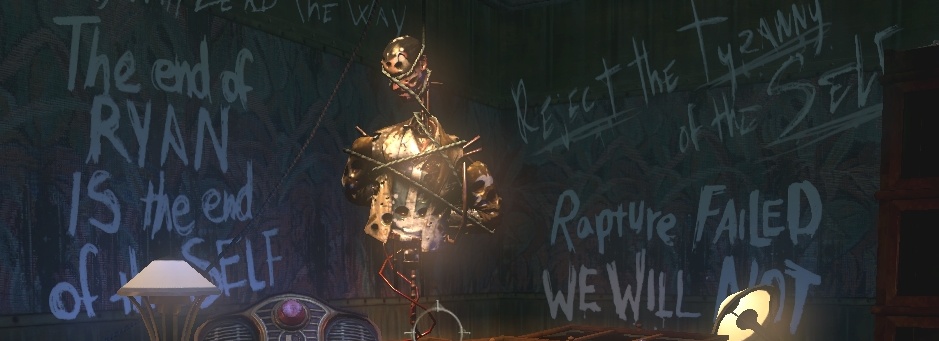
What’s Wrong With BioShock 2 And Why I Like It Anyway
This will sound bad, but the last thing I expected was for BioShock 2 to be worthwhile. It’s like making a Fight Club 2 – either you’re not gonna have that twist, or we’ll kinda see it coming. It wasn’t any lack of faith in the team – BioShock was very much Ken Levine’s gig, sure, but the prospect of a Jordan Thomas gig is just as enticing. But starting from a position of Least Necessary Sequel Ever, given too little time to both form a studio and significantly reinvent the game (MoonShock!), and committed to the obsequious inclusion of multiplayer – I could see fun, I could see interesting, I couldn’t see “I’m glad they made this.”
I am glad they made this. It feels like a remake, a ridiculous thing to do immediately after a great game, but some of BioShock’s systems needed it. By the last third of that game, you’d found enough interesting plasmids and tonics to develop some properly demented playstyles, ones very personal to your preferences. BioShock 2 is saying: what if that moment was just a few hours in, and you could just keep getting more bizarre, manipulative and powerful from there? Mechanically, it finishes BioShock’s clever sentence.
Plot-wise… I guess my only problem with the plot is that I missed almost all of it. As a Big Daddy might, I grasped that I was after my Little Sister, but all the other voices in my head seemed like a very long list of names all angry at me for something I didn’t understand. After hours and hours of hearing her talk about it, I still have no idea what Lamb’s plan for Eleanor was, or even what she believes in – except that it isn’t ‘the self’. I thought doing philosophy at uni would help, but I think I need a degree in listening. I can barely process basic information in a game unless it affects the level in front of me.
Both BioShocks often feel like two different game ideas, layered on top of each other but not convincingly connected. There’s the Ecosystem, this alien world of inhuman protectors stomping around with delirious gatherers, while packs of crazed aggressors try to steal them away. Then there’s the Backstory, a tawdry tale of fifties dames and johns doing the dirty on each other while high-minded well-to-dos carry on like they own the joint.
I buy into both, and I even buy into the Backstory leading to the Ecosystem, as the failed utopia finds a physical outlet for its neuroses in Adam, and creates something monstrous. What never works for me in either game is that the Backstory is still going on. Ryan set these Splicers on me? Why, don’t they just attack everything anyway? And now these Splicers are working for Lamb’s Family. They came to see the fundamental validity of her ethos in the last ten years, did they? In between screaming “Semen! On EVERYTHING!” and scampering across the ceiling with meathooks?
 Michael here feels disillusioned by objectivism, and is thinking seriously about his worldview.
Michael here feels disillusioned by objectivism, and is thinking seriously about his worldview.It makes it hard to understand what’s happened in the ten year gap. Lamb’s seized control – of what? What does control constitute in a leaking city of lunatics and corpse-sucking drones? And it leads to a structural clash: you must find your child and stop the demagogue psychologist as soon as possible! WAIT: You have not harvested or saved all the Little Sisters on this level, are you sure you wish to proceed?
WAIT: The rest of this post contains ending spoilers, are you sure you wish to proceed? Show.
PC Gamer: Spelunky And The Robot Apocalypse
The issue of PC Gamer out today – which I’m pleased to report you can now buy anywhere in the world with cheap or free postage – has a six page feature about Spelunky in it, by me.
It’s something I’ve wanted to do for months: the game possessed me, and no matter how many pieces I read on it I’m never happy that its appeal has been conveyed. I always feel if I’d read this stuff without playing the game, I’d have no inkling of the hilarious, ridiculous and terrifying situations it gets you into on a regular basis. My stab at this, as usual, was to just write some of them down.
Thanks to Deputy Art Ed Amie Causton and Spelunky’s level editor, we put together one of my favourite opening spreads:
It’s spliced with some great quotes creator Derek Yu gave me when I interviewed him, as well as the story of my obsessive search for Spelunky’s deepest secret: the lost City of Gold. It took me over a thousand attempts to find it, and stepping into that low-res treasure trove is one of the most spine-tingling moments of my gaming life. The opening to this feature is what I wrote about it minutes later.
It doesn’t feature a robot apocalypse, though. That’s in a report Rich and I did about a match of Supreme Commander 2:
It ends in with a bizarre twist that took us both by surprise, one I’ve never even heard of happening in this type of match before.
The other thing I want to highlight here is that Chris Livingston, who once blogged about what it’s like to play Oblivion as an ordinary citizen, writes a great mini spin-off to that in our Now Playing section this issue. In it, he attempts to be completely law-abiding in Grand Theft Auto IV. I am not prepared to confirm at this time whether or not hijinks ensue.
More on the issue here.

The Best And The Worst Of Mass Effect 2 (Spoiler Safe)
After playing about four hours a day for a week, I completed this yesterday.
Short review: fightin’s better, writin’s worse.
It’s a magnificent game, though, in so many ways. While playing, the things that nagged nagged so badly I had to write them out just for catharsis – it’s rather satisfying, it lets you stop analysing those problems and get on with enjoying the game. I’ve included those here in case it’s also cathartic to read them, but skip em if you’re just having fun.
I’ve also hidden anything that could be construed as a spoiler, with a link to reveal it that says what section of the game it’s a spoiler for.
First, one thing I wish I’d known before I started: You’re repeatedly warned that when you do the next main mission, there’s no turning back. This is a lie. Until you go to a thing called the Omega Relay and click ‘Enter’, you can still go back and do anything you like. Even after that point, some of the side-missions and personal quests willl still be available after you finish the game.
(No spoilers)
I think she’s now my favourite game character of all time. In ME1 it was a combination of a smart, take-charge protagonist role, Jennifer Hale’s naturalistic, commanding performance of it, and dialogue options that let me walk the line between ‘stern’ and ‘asshole’ with gratifying precision. In ME2, it’s all those things with the added pleasure that this is now my character. It turns out there’s a world of difference between sequels where you play ‘the’ character from the first game, and ones where you play your character from the first game. The face is my own creation and the voice is BioWare’s choice, but the two are now so powerfully linked that I’d squirm to watch someone else play as their Shepard.
(Spoilers about the first couple of hours – show)
(No spoilers)
Totally redoing the classes was a smart move: each now has a unique defining power that you use in virtually every fight, and it really made me excited to try them all. Biotic powers were always physical, but now they take effect instantly, making them practical and impactful to play with. And Tech has been beefed up to feel tactile too: freezing someone with Cryo ammo and shattering them with a punch is wonderfully satisfying.
I played Vanguard, whose special ability is a hilariously unwise ramming move that zaps you across the field to slam your opponent flying. I had some incredible moments where I’d smash someone out of the window with that, then shotgun their friend and punch their robot dog. If you go a similar route, make sure you do Grunt’s personal mission. Later you can learn one of your squadmate’s unlocked abilities, and Fortification works brilliantly with Charge.
(Major end-game spoilers – show)
Wow. I think it helps to play the last game immediately before this to get the full effect: I literally completed one and fired up the other. Even just the aiming is so much smoother, faster and more precise, and then when you fire: pow! It actually sounds like a physical object was launched from this weapon by an explosion! I didn’t dislike the weapons in the first game, but a combination of the excellent sound design, more forceful animation response, and robot dismemberment make this so much more tactile and fun. It feels like a few guys spent the whole of ME2’s development working on /feel/, and I think that’s something every sequel team should have.
(No spoilers)
The cover system is horrible. By making it the same button as Sprint, Use and Jump, you have to hide behind things before you can climb over them, you’ll stick to things you wanted to run past, and you’ll jump over things you wanted to hide behind. They still haven’t fixed the only real problem with ME1’s system: that when in cover, you’re not allowed to shoot anything to your sides or in front of you: you actually have situations where you have to take a few seconds to unstick yourself from cover, then walk back to where you were to be able to aim at someone directly in front of you. Two years they had, one fix to make, failed unaccountably they gone did.
Instead: they should have just had a sprint button. While holding it, you run as fast as possible and vault over anything in your way. When you’re not holding it, you’ll take cover behind anything you’re touching if you’re in combat. If you aim at anyone you can’t shoot because the game doesn’t have animations for it, you automatically come out of cover to turn to face them properly.
(Spoilers for both Mordin quests – show)
(No spoilers)
ME2’s substitute for ammo: all guns have infinite ammo, but they all need cooling, and the cooling tube thingy needs replacing every few shots. Luckily they all take the same cooling clips, so any you find restock your ammo for all weapons.
Firstly, this sounds like nonsense. Secondly, it actually is. It’s okay for the player to not really buy into the cooling concept, if it at least explains the ammo mechanic. But this concept is both unconvincing and an outright lie. That’s not how it works. You can run out of cooling clips for your pistol and still have 245 for your sub machinegun. There’s no way to use the pistol until you find more cooling clips for it: so weapons do have mututally exclusive clip types. Guys, that’s just ammo. Just call the pickup an ‘ammo box’ and we’ll get that it contains some ammo for each of your weapons. Don’t invent a bizarre new concept and then lie about the way it works.
And after all that, the system truly sucks. I’m constantly out of ammo for the one gun I like because I’m only allowed to hold 16 shots for it, and switching between that and the shitty pistol is a massive hassle. If I find some cooling tubes, I have to pick up one, then switch to the gun I like, then load it, then pick up the next one. Otherwise, it’ll fill the reserve ammo without filling the magazine, leaving me with even less ammo for the only weapon I like.
Instead: each weapon should have its own ammo, and that ammo reserve should be replenished automatically when you’re out of combat. Still encourages weapon variety, but you don’t have to search the whole goddamn room for clips, making sure you have the right weapon out, after every fight.
(Mild spoilers for recruiting Thane – show)
(Very mild spoilers about Harbinger – show)
(General spoilers about who Legion is – show)
(No spoilers, just the name)
Fails the first test of a name for any fictional character: use it in a sentence. “The Illusive Man is very impressed with your- heheh, no, I’m sorry, I can’t go on. The ILLUSIVE MAN? That’s what we’re calling him? In actual conversation?”
Instead: anything. I was vegetating in front of an episode of Friends the other day; Paul Rudd tried to come up with the worst name for himself imaginable, and settled on ‘Crapbag’. I would honest-to-God rather he was called that.
(Major spoilers about first Archangel encounter – show)
(Spoilers about returning characters – show)
(Spoilers for Thane’s personal mission and an interview – show)
(Intro spoilers – show)
Some actions now give you points for both. BioWare, let me explain the genius of your system to you so you can go back to using it correctly. ‘Paragon’ means doing something kind when it is not necessary. ‘Renegade’ means doing what may be necessary, even if it’s unkind. A person can be both: I punch and threaten people to make sure I get what I need quickly, but I’ll save lives if it doesn’t risk the mission. A single action can’t be, they’re defined as the complement of each other.
Worse, there’s now a skill that dramatically amplifies your Paragon and Renegade scores, completely defeating the point of the system. The game’s perception of your badassness and heroism is now based almost entirely on how many points you’ve pumped into a skill, and worse, it’s the same skill for both. If I wipe out a species because I don’t trust them (to take an example from the first game), that’s not more Renegade if I have +4 in Assault Training when I do it.
(No spoilers)
I did like landing on strange new worlds in the Mako and drivin’ around a bit, but inevitably they couldn’t make good on the promise of that Star Trek fantasy in ME1. ME2’s just a realisation of what they can do: concentrate on the worlds there’s a good reason to visit, and make them awesome. There’s nowhere as drab or awkward as Noveria in this game, and some of the main planets are downright exciting. Illium, in particular, is made real by the way the missions there take you in hovercars to cool places.
(No spoilers)
In theory I like the change: I hit the 150 item limit in Mass Effect 1, and sorting through the shit was made needlessly hard by a rubbish interface. Here there’s only one or two new weapons to find for each slot, and everyone gets them. They’re even meaningfully different: the second Heavy Pistol you get has less ammo but more damage per shot.
The trouble is, the new weapons are also so much better than the old ones that there’s no decision to make. The second Sniper Rifle fires around 3,000% faster than the original one, so if there is any difference in the damage per shot, it’s irrelevant. In the end the only decision you get to make is which Heavy Weapon to take, and they’re so cumbersome and ammo-starved that you end up avoiding them for most of the game.
It’s also a pain in the arse to switch between the good ones. It’s nice that they no longer make you carry all four weapon types, but as a Vanguard, I’m stuck with some useless toy called a Shuriken Pistol between my proper pistol and my shotgun, meaning I can’t weapon switch effectively without having to pause the game.
Instead: all that needs to change is for the newer weapons you find, which are a bit different functionally, to be similar in overall power to the old ones. If they just want to upgrade my Heavy Pistol damage, give me a Heavy Pistol damage upgrade – there’s a whole system for that.
(It’s exciting! That’s all I have to say – show pic)
(No spoilers)
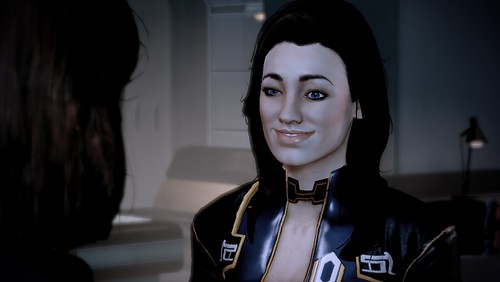 Okay Miranda, your previous ‘no smiling’ policy was working really well for me.
Okay Miranda, your previous ‘no smiling’ policy was working really well for me.
There’s no way to level up your squad or even see exactly what skills they have without leaving your ship with one of them and examining them planetside. And yet there’s a dedicated Squad screen on your personal terminal that would be perfect for it – instead, it’s functionless and missing most of the very information it’s there to provide.
To add weird problem to injury, every time you change area you have to re-select your squad and their equipment: even during the parts of the game when you have no choice of either.
Instead: assume I want to keep the squad members I selected when I left the Normandy, unless I turn back and try to leave the mission area: then, give me the option of aborting or switching squad.
(No spoilers)
The mini-game they’ve replaced the emptier exploration missions with really worked for me: the quivering line graphs gave a little thrill of excitement when they shook into a mountainous peak as I passed over a rich seam of Platinum. God damn you need a lot of Platinum in this game.
It does get old, but only shortly before you’ve got every upgrade you need. I think perhaps some late missions should give you a generous income of the main minerals so you can snap up anything you don’t already have.
(Spoilers for the prison – show)
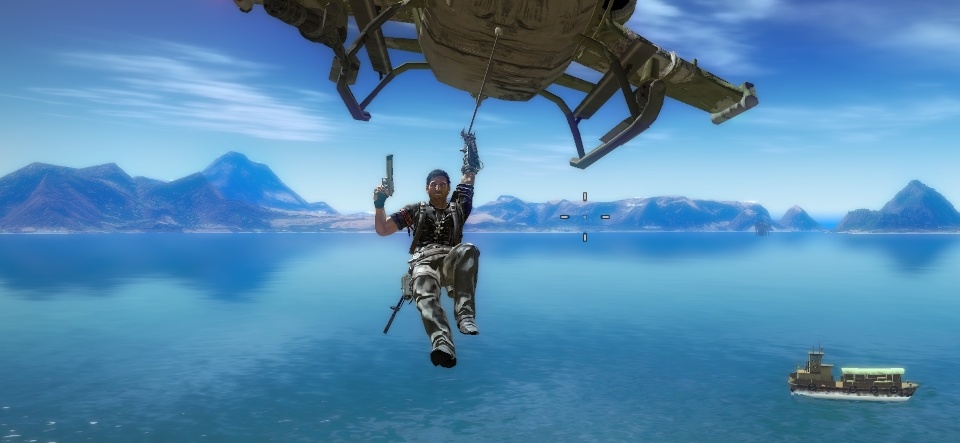
An Idea For A Better Open World Game
The last post was figuring out what we all like in open world games; this one’s about how to make that stuff work together. Can you include it all in one game, and still avoid theme-park silliness and repetitive grinding? No, probably not, but the ideas that crop up when you try are interesting. Continued
Open World Games: What Works And Why
It felt like last year open world games took over, and stopped being high-budget exceptions to the norm. It’s now pretty commonplace for a game’s linear story to be just the main attraction in a fairground of challenges, collectibles and distractions. ‘Go anywhere, do anything’ games have been around since the eighties, but it’s only in recent years developers have figured out the hooks, tricks and bribes to get a wider audience playing them.
Most of them kinda suck though, don’t they? Not the games themselves, necessarily, but their approaches to filling these sprawling open spaces with stuff to entertain you. They know how to make a traditional game, and they know how to make an open world, but their attempts to fit the two together amount to mashing a square peg into a round hole until it splinters.
I’m interested in whether there’s a way to take the most successful of these systems and make them work with the world, and each other. To fit with the fiction rather than jar with it, and to draw attention to the world rather than distract from it.
So ignoring how much we like them as games for a moment, what do some of the better open worlds fill their lands with, and how well does it work?
Assassin’s Creed 2:
- Series of story missions that lead you through each new city
- Scattered mini-missions that conform to one of a few templates (contracts, courier, etc)
- Informal missions like chasing any thieves you see
- Isolated unique puzzle/platform levels
- Collectibles, some of which assemble to shed light on the plot
The broad variety means there’s always something you feel like doing, and most of it is integrated into the fiction – albeit by clumsily grafting two different fictions together. The informal missions feel like fun because no-one tells you to do them, and failing is no big deal. The puzzle/platform levels are usually welcome because you know what you’re getting into when you take one on.
World of Warcraft:
- Miscellaneous quests
- Large scale co-op dungeons
- Resource nodes
- PvP arenas
It’s nice that there’s stuff to do wherever you go, but the lack of a main quest and presence of other players doing the same ones makes it hard to feel like what you’re doing matters.
Fallout 3:
- Series of story quests
- Character-driven sidequests without obvious rewards
- Occasional unique locations, people and loot (Oasis, Dogmeat, Alien Blaster)
The density of hand-scripted missions to find is enough that exploring is always appealing, and the unique stuff is rare enough to feel special, but common enough that everyone finds some of it. The main story has its moments, but your motivation for it is disastrously weak.
Far Cry 2:
- Two main story mission threads that sometimes merge
- Optional extra objectives to those missions with little reward
- Template mini-missions: convoys, assassinations
- A set of FedEx missions you have to keep doing to stay alive
- Trickily placed collectibles with a material reward
The main missions feel annoyingly disconnected from your objective, and the choice between them is illusory. The template missions are excellent because the templates themselves are compelling, but they never feel like more than that. The thoughtful placement of collectibles makes them much more fun to hunt, even if you don’t need the money.
Prototype:
- Series of story missions that change the city from peaceful to wartorn
- Fairground-style challenges
- Collectibles and destroyables that grant XP
The story missions are mostly bad, and the challenges are ridiculously divorced from the fiction. The changing city would be cool if you could make any of it yours, but instead the only influence you have is deciding which of two factions that hate you control certain bits.
Red Faction Guerilla:
- Series of story missions that conquer each area, making it safe and unlocking new one
- Template mini-missions: hostage rescues, defenses
- Fairground style challenges
The mini-missions do a good job of providing a choice of fun stuff to do without breaking fiction. The fact that the story moves on from each area, though, makes it feel less like a world and more like levels.
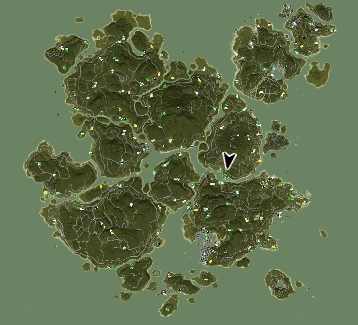
Just Cause:
- Series of story missions
- Scattered identical mini-missions to take over settlements
- Template mini-missions
- Collectibles
Since the mini-missions keep you in a small area and are very similar to play, they don’t offer much of a break. Neither do they or the collectibles carry an appealing reward.
It seems like the things that work best, or are most needed, are:
- Informal missions – opportunities you spot rather than jobs you’re ordered to do
- Collectibles that improve you, in places it’s fun to visit
- Categorised missions, so you can choose what kind of job you want to take on next
- Scraps of story scattered about to make your adventure feel meaningful
- Unique things you can find, take and use
- The ability to change or add to some part of the world
- Variety – at every stage you should have more than two meaningfully different options for fun things to do next
Any additions? Anything you really like in open world games in general, or a specific one? The next post will be figuring out how to cram all the good stuff into one specific open world.
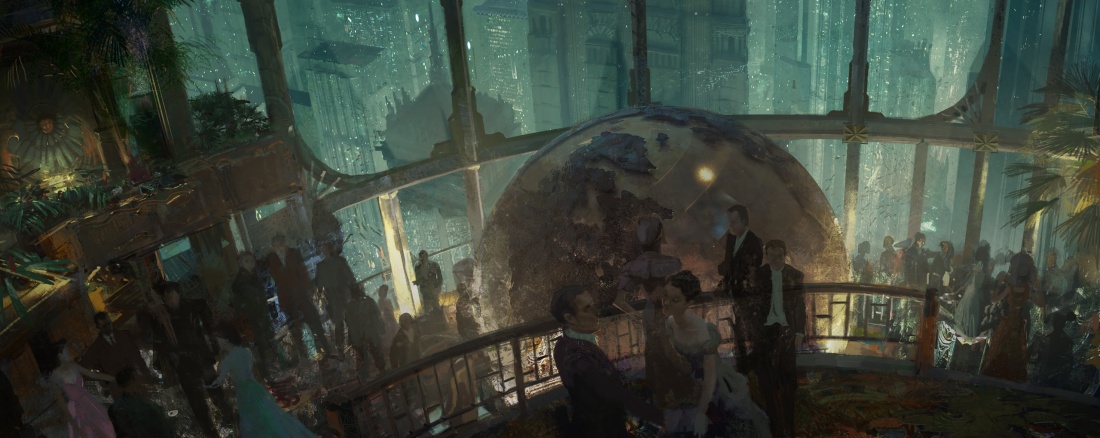
Month In Links: December
This is a thing I do now. Most of this stuff I mentioned on Twitter, but it’s not an ideal channel and I don’t like that I never link stuff here anymore. Continued
Captain Forever
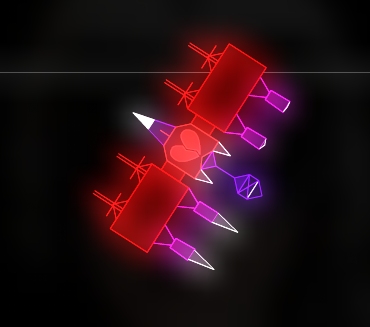
Fshhhhhhh.
Boop boop boop boop boop!
Pkow!
This is Captain Forever, a free web game where you shoot ships, and bolt bits of the debris onto your own. I was put off it before because when people were pimping it, you had to pay to get in on the beta. The other ways Captain Forever tries to persuade you not to play it is by making the game’s site confusing and devoid of information about the game, and releasing a similarly named sequel almost immediately, which isn’t free. It needn’t be so hard, just click this link to play secretly free now forever my lord.
I’ve been playing it secretly free now forever my Lord all day – my new year’s resolution was to design more space ships, so the year is shaping up well already. If you’d crashed your time machine into my Lego space police set when I was a kid and told me that in the year 2010, I’d be able to snap together my own little craft then fly them around and blow bits off other spaceships to make my spaceship bigger, I’d have been all, “What use is that information realistically of to me at this stage?” But it’s cool.
Since space is dangerous and there’s no separate screen for ship design, you don’t always have time to optimally rebuild your ship after a fight to incorporate all the cool new parts you’ve salvaged. Thus, you scoot wonkily away from the fight with a hastily cobbled space hulk like this:
And find a quiet corner of the galaxy to take yourself apart and build something a little more like this:
My logic with that design was to protect my parts: obviously it’s counter-productive to cover your guns entirely, but by giving them ‘barrels’ like that most incoming fire would hit the tough, functionless hull pieces instead of my fragile weapons and engines.
The same logic applies when attacking: you’re trying to destroy their core piece without damaging too much of the rest of them, because anything they have left when they die simply falls off for the taking. It’s glorious when a lucky shot nails their core module and a whole vast battleship made of tier-5 parts just gently disintegrates into a nebula of fatal freebies.
This one… is harder to explain. I made this after buying Captain Successor, esentially the registered version, and as you can see it adds some stuff. The quivering pink lozenges are Blurst Shields: they bounce back enemy fire. The U-shaped piece is a Chrono engine, which accelerates the operating speed of anything attached to it. The circles are all translocators, a weird direction-agnostic propulsion device that lets you strafe and reverse as fast as you move forwards, but is useless for turning sharply. And the big circle is just a bubble shield: it gets taken down easily, but regenerates, meaning small clashes do no lasting damage.
This is the fastest ship I’ve built so far, structured to allow two racks of India-class engines to max out propulsion without making me dangerously wide. When most of it got smashed to bits by a Kilo craft, I downsized to this:
Slight, but my most powerful ship – and also my most musical. It’s the only time I’ve lasted long enough to scavenge some Prismatic Juliets (white guns), the second best in the game, and I’ve backed them up with a chorus of India and Hotel lasers – the next two tiers down. This is significant a) because a laser hotel would be awesome, and b) because your fire in Captain Forever doesn’t sound the same with every shot: the tones progress through a musical sequence, so your selection of guns and their different fire rates combine to make every ship play a different tune. The three-layered rhythm of this one is awesome – if you do get Captain Successor, try it out here.
At the end of a game, you can go back through every form your ship ever took during it, and save any as a link anyone can click and play with. It’s one of the neatest content sharing systems I’ve seen in a game, better in some ways than Spore’s. Most people will only be playing with the free version of course, so here‘s the one design I did save while playing that – the gun barrels one. Slow, but safe.
If you get Successor, which is $20, my others are here, here, here, here, here and here.
My Favourite Games Of 09
Three-player co-operative fantasy physics platformer.
Provided you have two friends and two gamepads, there’s not much funnier than trying to blunder through these fairytale trapfests without switching characters. The Wizard has to conjour boxes to drop on enemy’s heads, the Warrior has to get his friends to stand on crates as he tosses them over gorges, and the Thief swings elegantly overhead, raining arrows down whether it’s helpful or not.
Lighter-hearted Grand Theft Auto clone.
“I threw pimps into lamp posts, I threw pimps into the sea.” Was the heading of an actual article I got to write in PC Gamer this year, thanks to this game.
Budget-priced streamlined Diablo-style action RPG.
It ended up being called the Draining Epic Boar Cannon of Venom: the result of a great four-barreled pistol, socketed with a great life-stealing skull, and then run through the Shitty Wizard‘s random enchantment service a few dozen times. The genius is not just that you can soup up your best found weapon to make it even more spectacular, but that most offensive skills – like my wonderful Explosive Shot – multiply that weapon’s damage rather than adding a paltry fixed amount.
Old-school real-time strategy.
The most basic tank can turn into a lamp post. If you put a dog in a jeep, the jeep’s gun turns into a megaphone to amplify his bark. I got through one mission by making Sean Connery dress as a bear. In another, my men were audibly dismayed that the lasers incinerating them had come from Abraham Lincoln’s eyes. This is really all I need.
Free-roaming action massacre.
You know that move in faux-wrestling where they climb the ropes to jump elbow-first onto tubby bare-chested man? In Prototype, I ran up a skyscraper, whipfisted onto a helicopter and flew to cloud level to get enough height for an elbow drop. On a tank.
Small-scale strategy.
This wouldn’t be in the list at all but for the Last Stand mode the last patch added. Three players have one unit each, against twenty ridiculous armies. You fail, but each try earns XP, and XP earns new wargear. Even once you have something you like in every slot, the excitement of earning new stuff never wears off because each bit suggests inventive new loadouts to tinker with. In that, it’s one of the most intelligently designed RPGs I’ve ever played, and a needed reminder that Relic are as clever and full of surprises as ever.
Punching.
I really can’t stand the Joker in this, which made me think there was no way I’d end up loving it. As it turns out, the game’s not really about him. The swift and gratifying fisticuffs are more often broken up by the game’s real villain, Scarecrow. His insidious and persistent influence is handled with invention and artistry that lifts Arkham beyond being merely The Only Good Fighting Game.
First-person shooter RPG.
The point of randomising weapon stats, which Borderlands was keen to do in an FPS, is the thrill of finding something that seems too good to be true. I found an electric revolver with a preposterous punch, an explosive sniper that obliterated enemy faces, and a shield so strong it turned my slender ghost lady into a thundering tank.
Time-travelling platformer.
I get irritated with time travel movies, Primer excepted. No! He wouldn’t fade from the photo, idiots! He’d either never have been there or he’d remain! Won’t anybody formulate a coherent logical framework for this kind of light-hearted entertainment?
The great thing about time-travel games is, they have to. The player gets to choose what happens, so the developer has to be able to answer every awkward question he could possibly ask – and even design puzzles that demand your players to understand time travel better than most film-makers seem to. Braid does that, and goes so far beyond; to fringes of twisted thinking and backflips of magical logic I’d never considered.
And yet, so long as you don’t force yourself to solve every puzzle first time, it’s surprisingly doable. It invites incredible thoughts, rather than trains them like Portal. For some, that’s why Portal’s better. For me, that’s why it’s worse.
First-person free-running platformer.
Plenty of more solid games here. Plenty of smarter ones. Plenty of braver, stranger, more surprising experiences. But if I could only save one from the fire, it’d be Mirror’s Edge. Its eye-tinglingly vivid city is one of my favourite imaginary places, and it’s uniquely good at making you feel like you’re there.
I play a lot of first-person games, but in the rest I’m a hovering disembodied gun turret, which really doesn’t have much to do with the experience of being a real person anywhere. The soundscape of Mirror’s Edge is your footsteps and your breath, and your scampering, scrambling gait is the most excitingly tactile way to interface with a virtual world I’ve played. It says something when you can start the trailer for your game with a minute of someone playing your game, on an ordinary level, without fighting anyone, set to the game’s music.
I’ve never really played anything like this, but more to the point, I wish I had. I wish shooters felt like this, I wish we had art this chic, places this cool, music this good and this sense of embodiment in virtually everything we played. Instead, I’ve got an uncertain wait till the next one.
What’s Wrong With Team Fortress 2’s Unlocks
I cooed a little about the amount of free stuff Valve have added to TF2 since release, but it’s not purely to fix or improve the classes. They’ve been experimenting with ways to leverage this free content to add an element of persistent progress and character customisation to TF2. But their experiments have been weird, and so far the resulting system doesn’t really do its job. If you’re all too familiar with why the current system needs changing, you can just skip to how I suggest changing it. Here’s what’s wrong:
You can unlock weapons for a class by earning its achievements. That means everyone plays the same class when its new weapons are released, even before they’ve earned any of them. We’re bribed to play that class at the very time when TF2’s primary problem is inevitably going to be too many people playing that class. And we’re often bribed to play it in counter-productive ways to fulfill achievement criteria, some of which are just fun little jokes.
You can ‘find’ weapons and hats randomly. On the plus side, that sometimes gives you a weapon for a class you don’t normally play, encouraging you to try it out. On the down side, well:
- A lot of what you find is duplicates of what you already have, which means that little gold message comes to be associated more with disappointment and absurdity than excitement or pleasure.
- People’s fortunes vary wildly without any correlation to skill. Some people play for hours a night, rarely get a weapon, find only dupes, and have never seen a hat in hundreds of hours of play. Others consistently get unlocks every half hour or so, and have copious hats for classes they don’t even play.
- Consequently, very rare and exclusive class items like hats don’t signify anything when you see a player wearing them. What does the mighty Camera Beard tell you about a Spy? Nothing, he just got lucky.
You can ‘craft’ items by combining lots you have to produce one you might not. Presumably meant to tackle the dupes problem with the random drops, but what we understand of the current system is totally bizarre. If you don’t have the Eyelander, you seem to need six copies of the other two Demoman weapons, plus at least eight melee weapons, to craft one without losing anything you need. In a given time period, you’re about 13.8 billion times more likely to just find an Eyelander than what you need to make one.
For a hat, you’d have to find eighty-one weapons you don’t need just to make a random one. To have more than a 3.4% chance of crafting the one you want, it takes a hundred and twelve. At the end of which, you’ve got something a new player might find in his first hour with the game.
That’s what’s wrong with the current system. I think it needs a few changes to work as an addictive RPG, as a way of customising your characters to your tastes, and as a way of showing off your skill or dedication in the way you dress. The unlocks system ought to make the repetitive violence feel like part of a larger goal, and give you a sense of progress even if you lose. Here’s how I’d do it:
Unlockable Weapons: You’d be able to browse these from the main menu to see what’s available, and select one you want to unlock. Each requires somewhere between 250 and 500 points, and once you select it all the points you score in-game, as any class, count towards that. That’s about 2-4 hours play – the Flare Gun might be 250, the Direct Hit 500. You need to be in a game with at least four non-idle players or bots for your points to count, but beyond that anti-exploit measures are probably futile.
On top of that, every five hours or so you’ll get a random weapon unlock that you don’t already have. If it’s the one you’re working towards, points earned so far transfer to what you pick next.
The idea: Every match gets you closer to something you really want, and the items you choose first make you a different player to those around you. At the same time, you can still get something unexpected for a class you don’t normally play that might encourage you to try them.
Achievements: I think they should stay – I even think the silly ones should stay. In fact, I’d get rid of the sensible ones, and just leave the ridiculous accomplishments – taunt kills, ironic deaths, corpse dancing and tortured puns (Slammy Slayvis Woundya? That’s what you’re going with?). But they no longer earn you weapons, they’re just an acknowledgement for any time you do something remarkable.
The idea: Silliness absolutely has a place in TF2, and trying to get things like taunt kill achievements just makes the game hilarious for you and your enemies. But no-one should be bribed to go for them if they don’t want to.
Feats: This is where the sensible achievements would go. They’re things that genuinely benefit your team, so you’re rewarded each time you do them: some bonus points towards your unlock (but not your in-game score) and a little pop-up: “Medic Feat! Extinguished five team-mates, +2 points”. Things like multi-kills, capturing a point alone, setting light to a cloaked Spy, killing a fully charged Medic, or making the winning capture would always be rewarded.
The idea: By letting people know they’ll be rewarded every time they do this, it both teaches and incentivises intelligent play. Achievements already do this a little, but not reliably: plenty of the actions they suggest are actually pretty dumb.
Unlockable Hats: These are handled separately, but again you choose which you want to unlock. When you do, only points and feats earned as that specific class count towards it, and the number required is in the thousands – twenty hours’ play for most, more for some special prestige items. You still earn points towards your weapon unlock at the same time.
The idea: A hat says “I play this class, I play it well and I play it a lot”. A Camera Beard says “I am amazing or crazy.”
Crafting: No crafting. I don’t think the system is entirely unsalvagable, and Chris Livingston does a good job of salvaging it in a much shorter post than mine. But ultimately any full crafting system hinges on finding dupes, which I think ruins the “ooh, I found something!” moment by diluting it with disappointment.
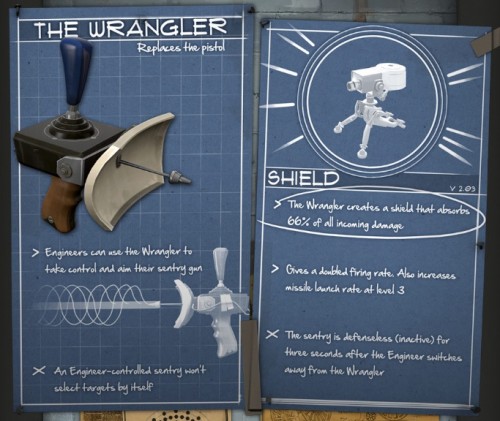

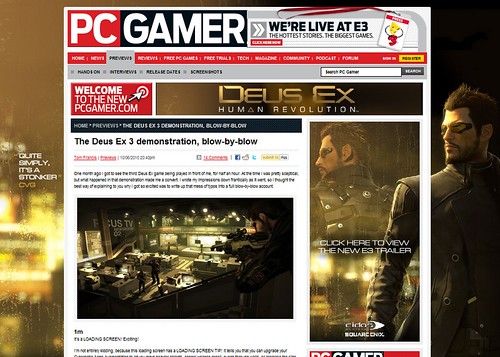

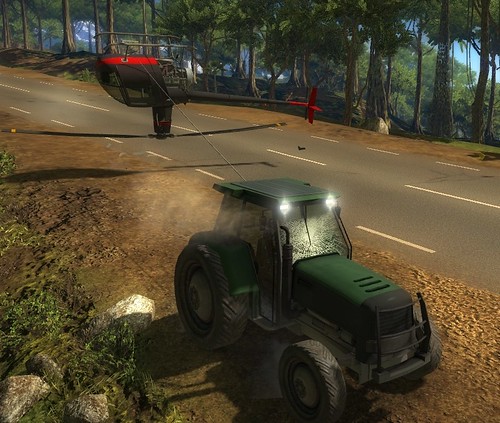
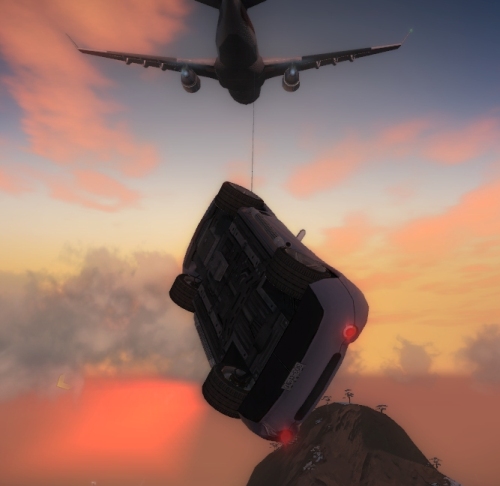


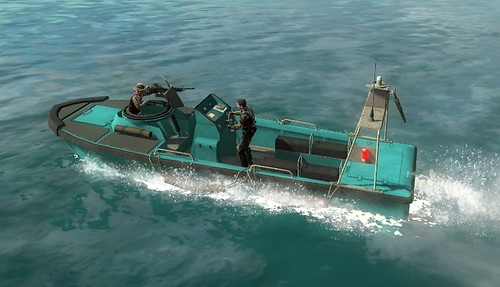

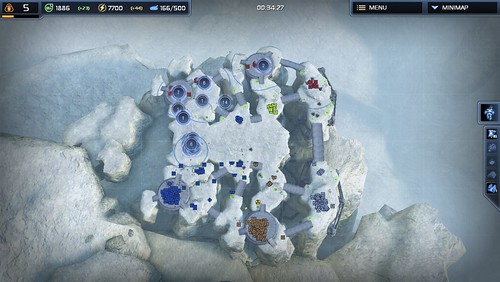





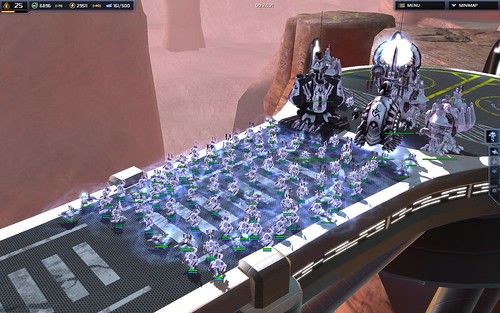
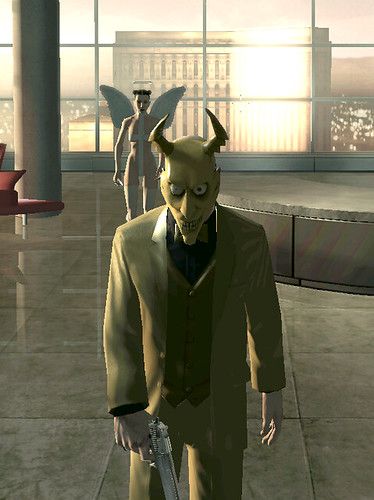
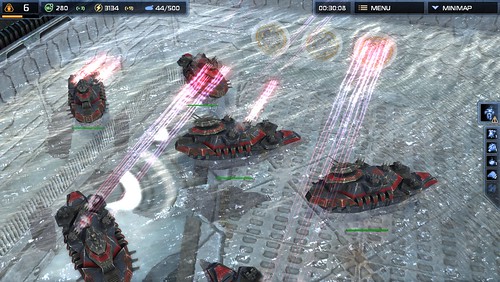
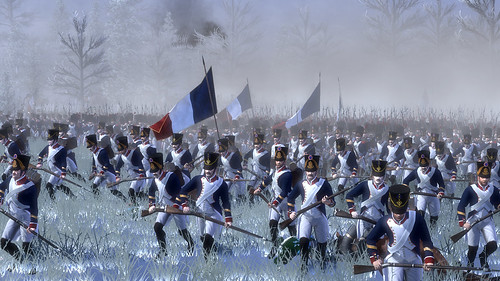

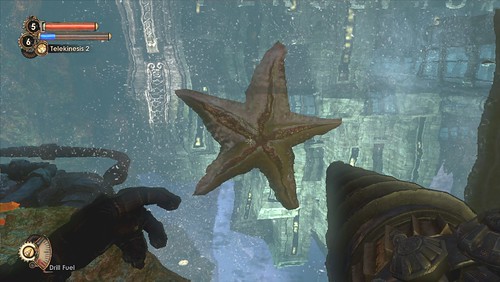
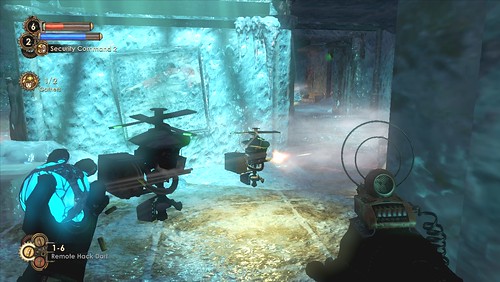
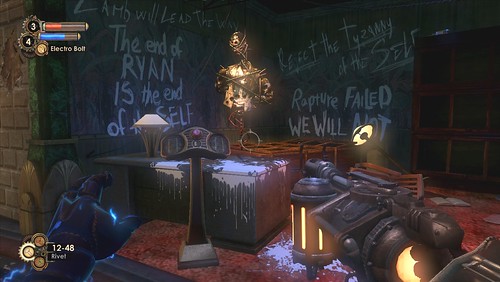
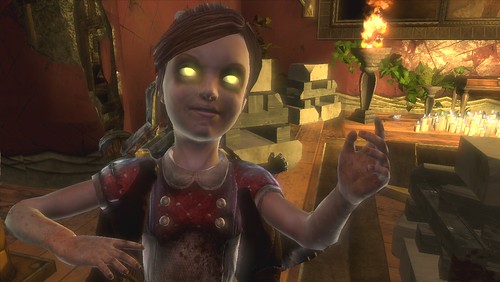
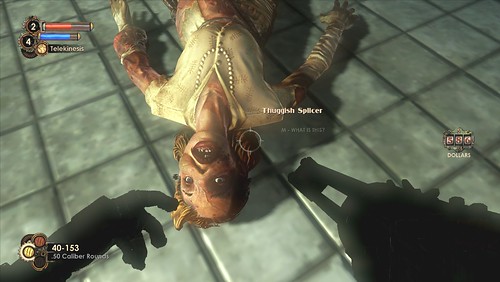
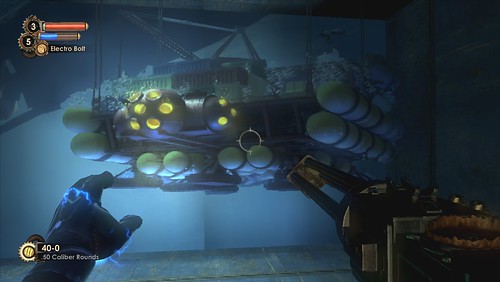

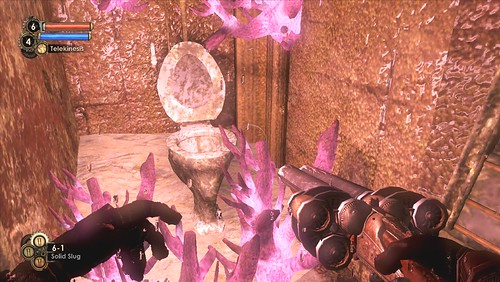
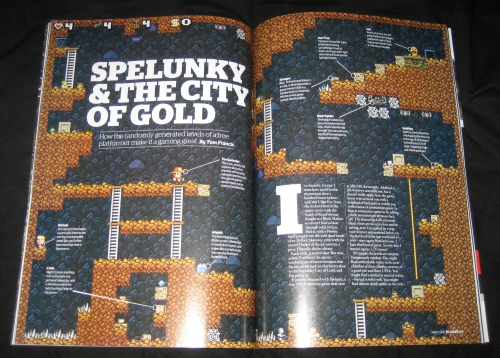
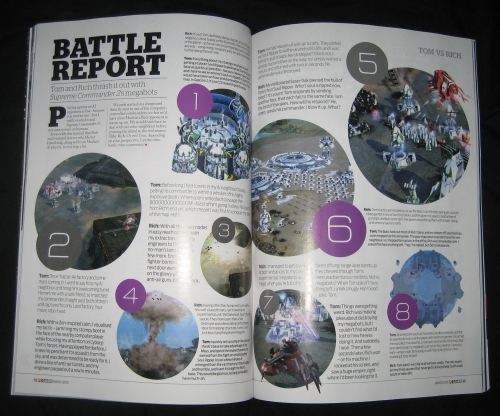

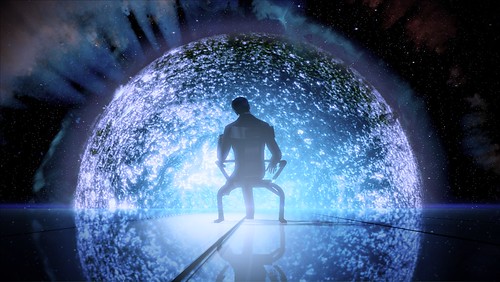
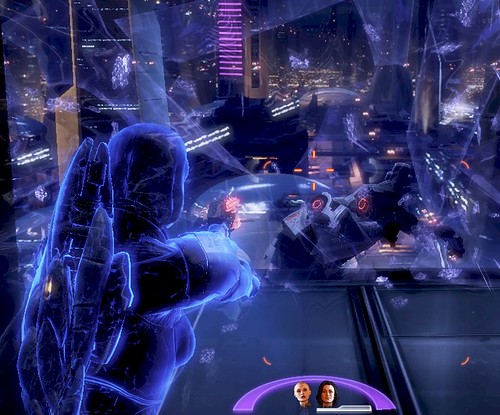
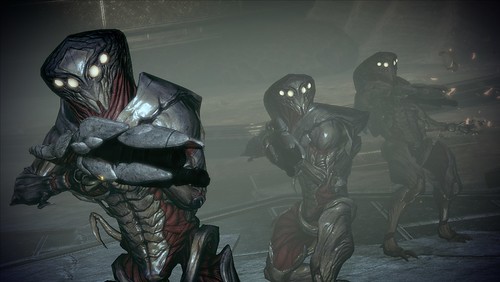
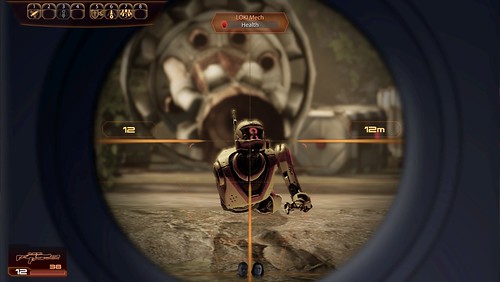
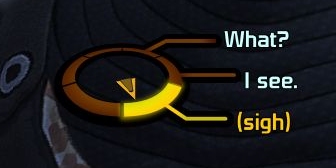

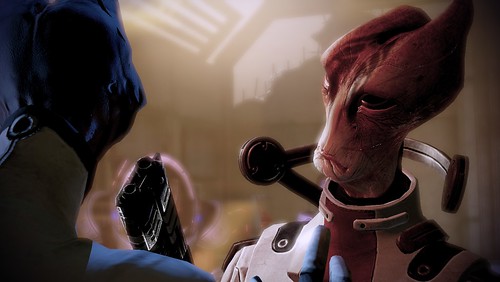

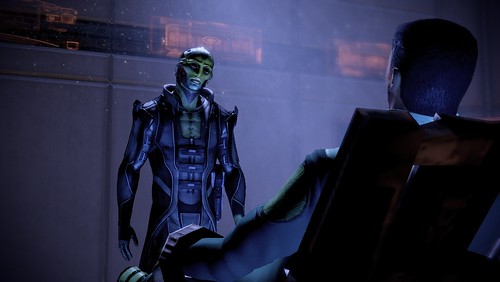
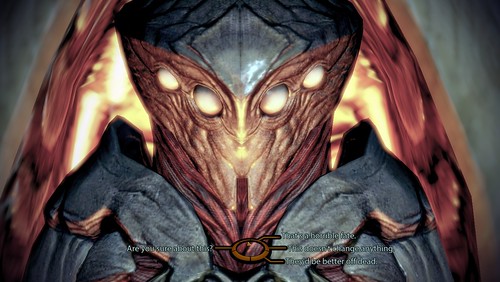
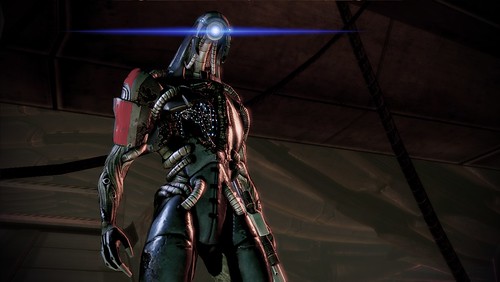
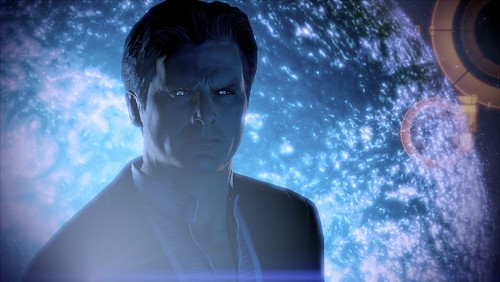



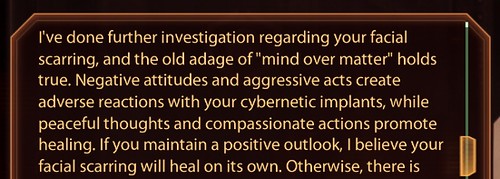
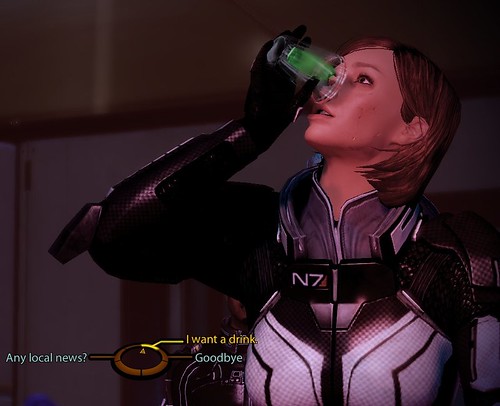

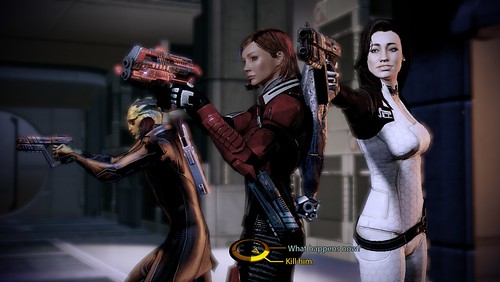


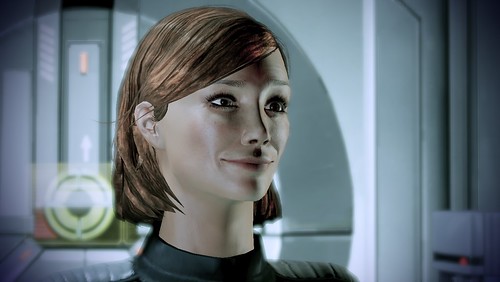
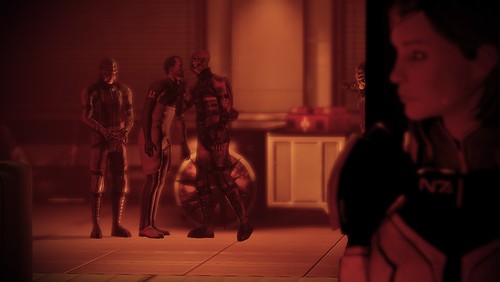
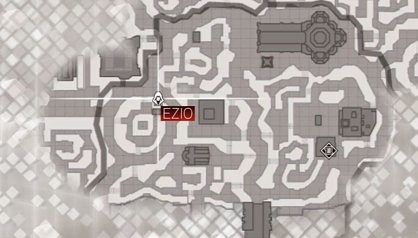
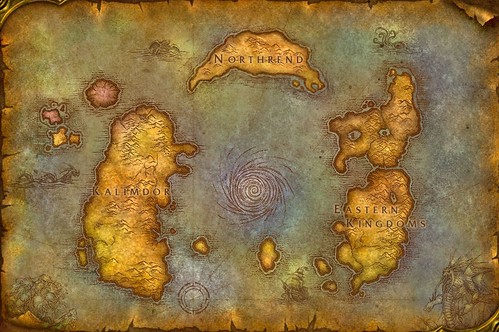

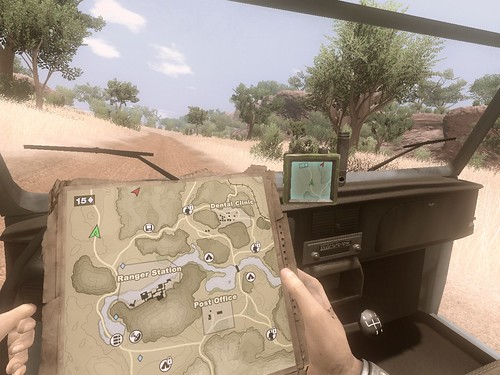
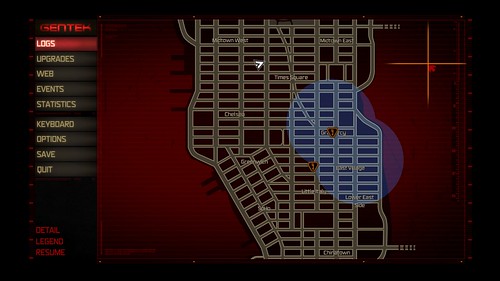


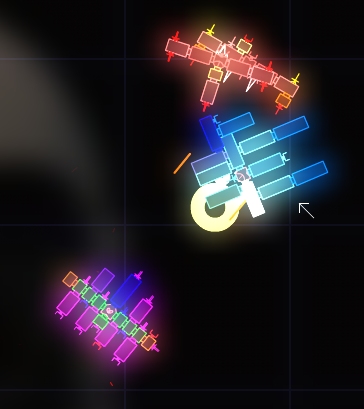
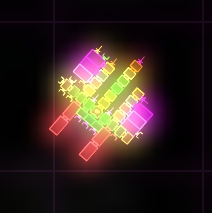
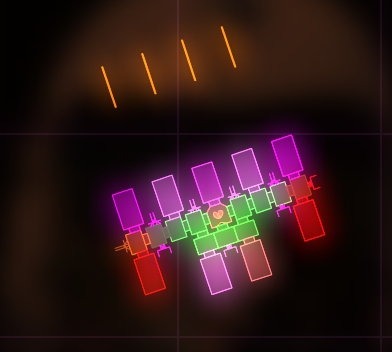
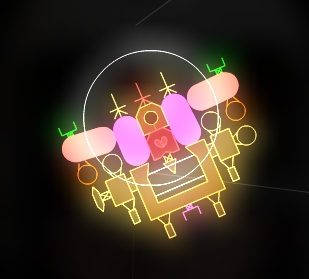
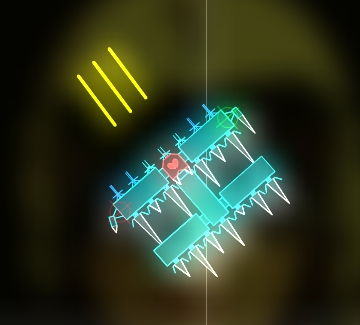
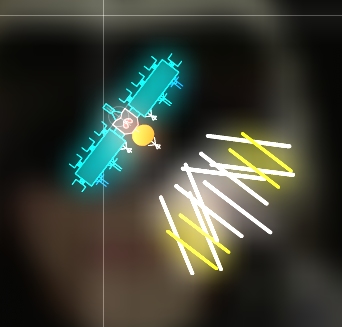
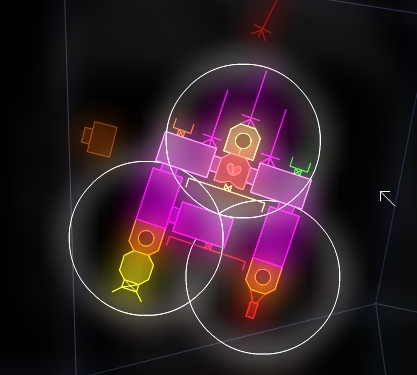
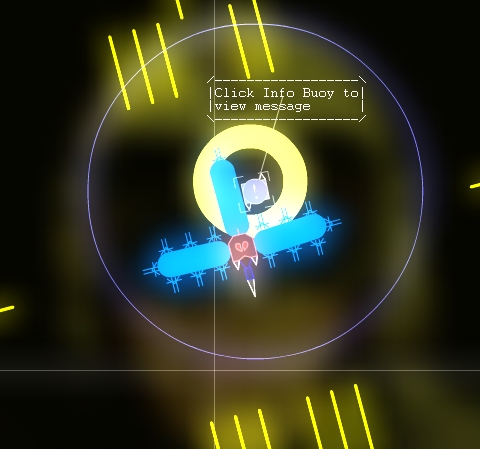
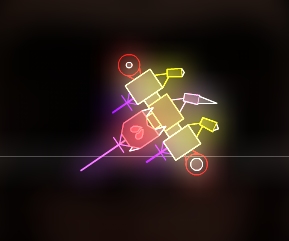
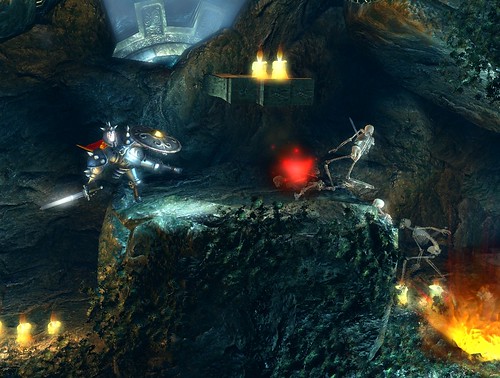
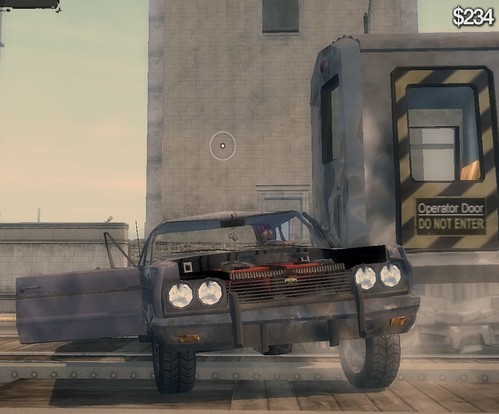
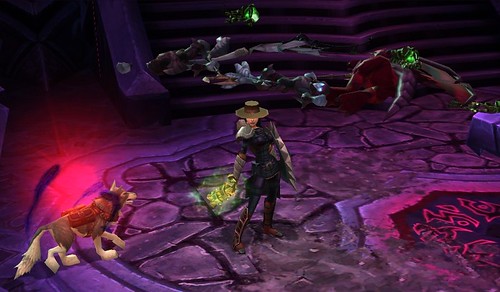
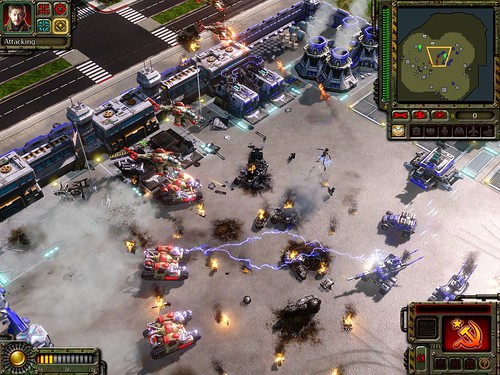
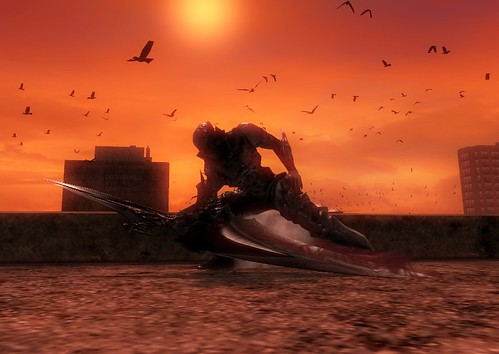
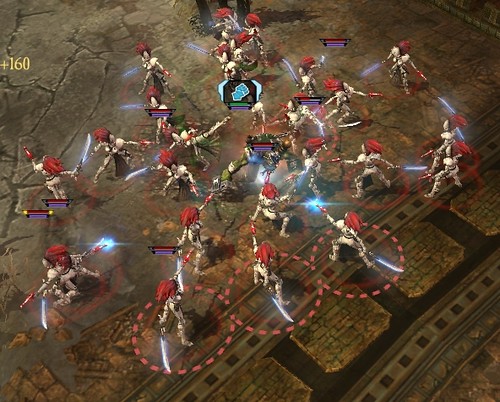
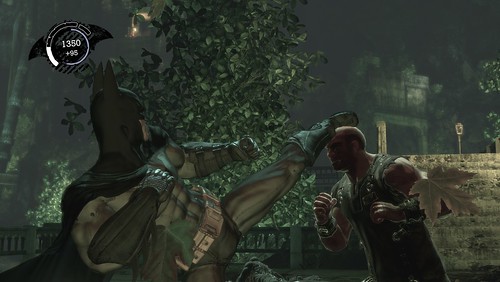
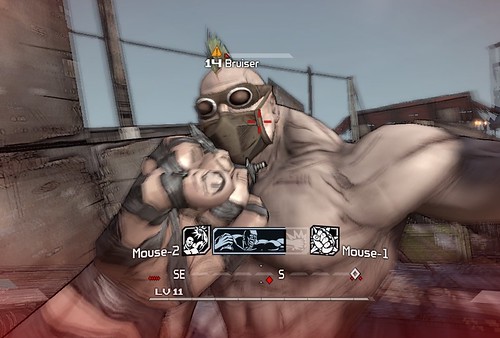
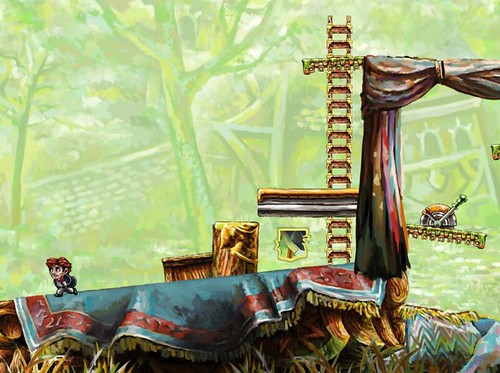


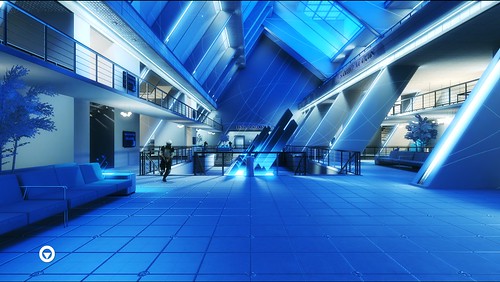

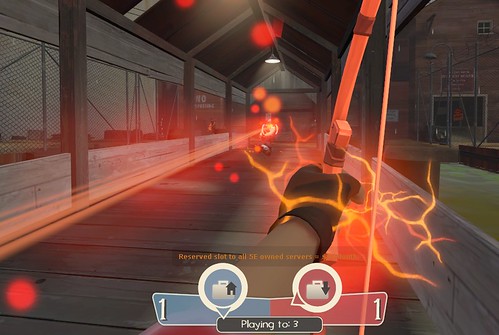

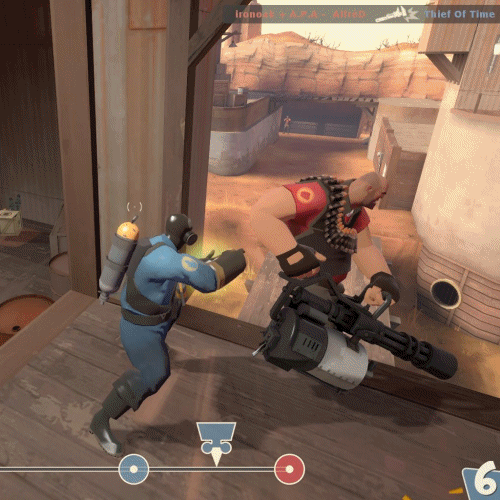
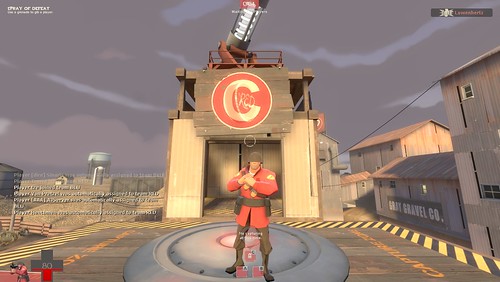
![[FBP] Dirty Squirrel is looking good!_0002](http://farm5.static.flickr.com/4052/4207772952_4a98696b4d.jpg)